This review was provided for free, but Trek Coquitlam supplied a temporary demo bike for me to test. My goal is to be transparent and unbiased with you, this video and writeup are not meant to be an endorsement of Trek products. I welcome your corrections, additions, and feedback in the comments below, and the Trek electric bike forums.
Observations:
- Trek is one of the “Big Three” North American bicycle manufacturers (including Specialized and Giant). The company launched in 1975, specializing in hand-brazed steel frames, and then expanded to 90 different countries. In my opinion, they are one of the very best ebike makers with high quality designs, above average support, and a wide range of frame configurations, sizes, and accessories.
- The motor and battery system used for this electric bike are familiar to me because they were also used for two Electra models that launched in prior years; the Cruiser Go! and Townie Go! It’s a light weight system that blends in, reduces noise, and keeps the cost relatively low. I’m calling this out because Electra is part of the Trek Bicycle Company, and you may see these models at Trek dealers. I think they are worth knowing about and considering for their different colors, relaxed cruiser geometry, and similar performance if you’re looking at the Trek FX+ 2.
Pros:
- These Trek FX+ 2 electric bikes look amazing, and are available in many sizes and colors! They come feature complete with matching fenders, lights, and a rear rack… They even have a chainring guard and chain cover. You can get the bike and just go, regardless of conditions, without needing to take extra steps. I love how the battery is completely hidden in the downtube and the planetary geared hub motor is so compact and painted black to match the spokes and rims… It is basically hidden behind the 160mm disc brake rotor and 9-speed cassette gear cluster. The result is an ebike that could easily be mistaken for a traditional bicycle. I found that the bike is also very quiet, even when using the highest level of assist.
- The bike I tested was size medium, and it felt very comfortable to pedal and ride. I could even ride with no hands and the bike tracked well. The taller 700c (28″) wheels offer a low attack angle that smooths out cracks and bumps a bit… which is nice since there’s no suspension.
- This is an electric bike that could be used for all sorts of activities, I see it as potentially being a best seller because it’s so versatile. So I love that they have both a high step and mid-step build. Both models still have bottle cage bosses for bringing fluids or an accessory along, or you can use this spot to mount a Range Extender battery pack to double your range! That’s an awesome and unique feature. In general, I was really impressed by how thoughtful the concept and range of options are for these ebikes.
- The body position and geometry are fairly active, so this would be a great choice for people who enjoy pedaling and want to be semi-aerodynamic. You can find more upright relaxed models in the cruiser style from Electra if you want. I love that it has a 9-speed drivetrain with such a wide cassette range of 11 to 36 tooth sprockets! That’s above average for this price point in my experience.
- It was very impressive to see a narrow-wide chainring on this ebike, which will help keep the chain from slipping or dropping. I usually only see that on mountain bikes or high speed models. This chainring pairs perfectly with the plastic guard to keep the drivetrain functioning reliably in many conditions.
- This is a little thing, but all of the hardware is color-matched as black or silver. This includes hubs, spokes, rims, seat post, stem, handlebar, chainring guard, kickstand, and cranks. This is the level of detail that Trek is known for with all of their products, and it sets it apart when comparing to some cheaper brands.
- While the battery is not easily removable, and the charging port is a bit low on the frame, I appreciate how easy it was to interact with, that it has a durable plastic cover, and that the charger is so light and compact. Also, you can remove the battery for repair or replacement with the help of a shop if needed! Trek warranties their bikes for two years comprehensive and lifetime on the frame, so I feel that this model and battery design will be supported for a long time.
- Even though the display panel is very simple and compact, I found it to be less intimidating and distracting than some LCD computer displays. There are five green dots for charge level, and three red dots for assist level… and that’s it. Apparently there could be a smartphone app at some point, and Trek / Electra dealers can connect to the bike to perform software or firmware updates at the shop.
- In addition to being one of the lightest electric bike from Trek, it’s also one of the most affordable at $2,499. This is very impressive to me considering it is sold at a dealer, comes with that great warranty, is offered in so many sizes and colors, and is feature complete. I love the bell, ergonomic grips, internal cable routing, and headlight placement! You can spend ~$700 less for one of the similar Electra models that use the same drivetrain, but they may not include the accessories and don’t have hydraulic brakes.
- The hydraulic disc brakes are very easy to actuate and offer adjustable-reach levers to fit a range of hand sizes. This pairs perfectly with the range of sizes. I should mention also that the handlebar and crank arms change length to match the different frame sizes too, so it’s a more complete size difference with improved fit and comfort.
- Interestingly, the Stagger version of the bike (step-thru model) uses a female specific saddle. I thought hey would have gone gender neutral because many people like the approachability of mid-steps and step-thrus, but I still found the saddle to be comfortable… and I’m a guy. Perhaps women will appreciate it even more. Note the stagger frame comes in three sizes while the high step comes in four.
- Trek has included a clear sticker slap guard on the right chain stay that will keep the paint looking beautiful and might also reduce noise if the chain bounces into the frame. They also configured the motor to have a left-entry power cable that is tucked between the left chainstay and disc brake rotor. Some of the Electra models I saw with the HyDrive had the motor power cable on the right, protruding and cluttering the derailleur area.
- I’m used to seeing affordable electric bikes specced with cadence sensors, but the Electra Townie Go! 7D comes with a torque and cadence sensing bottom bracket that feels a bit more natural and dynamic. The harder you pedal, the more power you get. It doesn’t feel jerky or surprising, but it does require a bit more pedal effort and rotation than a pure cadence-only sensor.
- If you hold the minus button for a few seconds, then the plus button, the bike will offer walk mode which is useful if you get a flat tire or need to cut across a park or other crowded area. This is especially useful if the rear rack is loaded up, and I love that it has such a high weight capacity of 25kg 55lbs!
Cons:
- Compared to many of the other Trek electric bicycle models, this one has a lower battery capacity of 250 watt hours, no USB charging port on the display panel, limited display readouts, and a minimalist hub motor vs. multi-sensing mid-drive. It’s light, efficient, and inexpensive, but a lot less powerful and dynamic.
- As much as I love the internally mounted battery design for keeping weight low and center, the pack is not easily removable. This means you have to park the entire bike near a plug to refill. This could be challenging for people who ride to work and have to park outside, and it also means the battery could be exposed to more extreme temperatures. That said, it’s cool that they sell an optional Range Extender battery pack that can be removed, which will double your range.
- In general, the hub motor on this electric cruiser bicycle is weaker than most others in North America. It’s maxed out for European markets, offering 250 watts and 40 newton meters of torque, and it felt very satisfying to me, but a lot of the competition is at 350, 500, and even 750 watts. One downside to higher powered motors is that they use the battery energy up faster, which requires a larger battery, which makes the bike heavier and more expensive.
- I noticed that the brake levers did not have motor inhibitors to immediately cut power whenever the rider is stopping. Considering the weaker motor and the torque plus cadence sensing pedal assist sensors, I feel that it’s still safe and was a good decision to reduce wire clutter and complexity, but there may be moments when the brakes are fighting the motor at the very beginning of a stop or if you accidentally keep pedaling while braking.
- I love that they chose hydraulic disc brakes for this model, even though the rotors are fairly small at 160mm diameter vs. 180mm+ that’s probably fine for urban and city riding for most people. However, if you’re heavier, the bike is loaded up (including the rear rack), and you’re going down a big hill, the brakes just aren’t as strong. The combination of smaller rotors and taller 28″ 700c wheel size reduces the mechanical advantage given to the brakes.
- I love that the bike includes fenders and lights, although the rear light only uses one LED and is a little exposed on the rack vs. surrounded or protected by the tubing. Try not to bump the light while loading the rack as it could crack more easily in this location. I was impressed that even though the fenders are plastic, they didn’t rattle a lot.
- There’s no suspension on this electric bike, which is not uncommon for more affordable city models. It helps to reduce weight, improve stiffness and steering response, and of course keep the price lower. That said, the tires are fairly narrow and the pressure rating is kind of high at 55 to 85 PSI. If you ride on bumpy terrain or have a sensitive neck or back, consider a 31.6mm suspension seat post, but note that it will raise the minimum saddle height by a few inches.
- The headlight has side windows to make it more visible from different angles and the tires have reflective stripes for improved visibility and safety, but I didn’t see a puncture protection rating. Neither wheel has quick release, so changing flats and doing bike maintenance could require more time. One benefit however, is the reduced chance of theft and tampering at public bike racks! Not even the saddle clamp appeared to have quick release.
- The pedals that come with this model are very basic plastic with some shallow knubs. They are probably fine for most riders who are just casually riding through neighborhoods and city environments, but they aren’t super grippy and won’t allow snow or mud to squish through the way that other pedals might. Thankfully, pedals are easy and inexpensive to replace! I would consider a BMX pedal like this for myself.
- The display panel button pad is discrete and less likely to be damaged because it’s so compact, but it doesn’t show your current speed, a precise battery readout, estimated range, or any of the other neat stats that a full LCD panels usually do. I was told that the bike might have a smartphone app in the future, but I didn’t see an obvious way to pair it, and even the walk mode setting was a little confusing to activate (hold the – key for a few seconds until the red lights cycle repeatedly, then hold the + button to make the bike move forward slowly).
- This is a minor consideration, but I noticed a lot of ebikes with hub motors also have a throttle. This allows for easier starts and balancing, or simply not pedaling, which some people appreciate. All Trek/Electra ebikes are Class 1 and do not have throttles, which means they can be ridden in more places legally and tend to get better range because you have to pedal along.
- The kickstand is positioned well, and I love that the length can be adjusted without the need for tools… but it just didn’t seem very sturdy. I had it slide to a lower position a couple of times and the plastic end tip actually fell off at one point when I was adjusting and standing the bike for photos. The mounting interface is very standard with 18mm spaced bolt holes. I guess if I were to do it over again, I wouldn’t mess with the length and I probably wouldn’t try to extend it to the longest (tallest) position because it might not be as sturdy there.

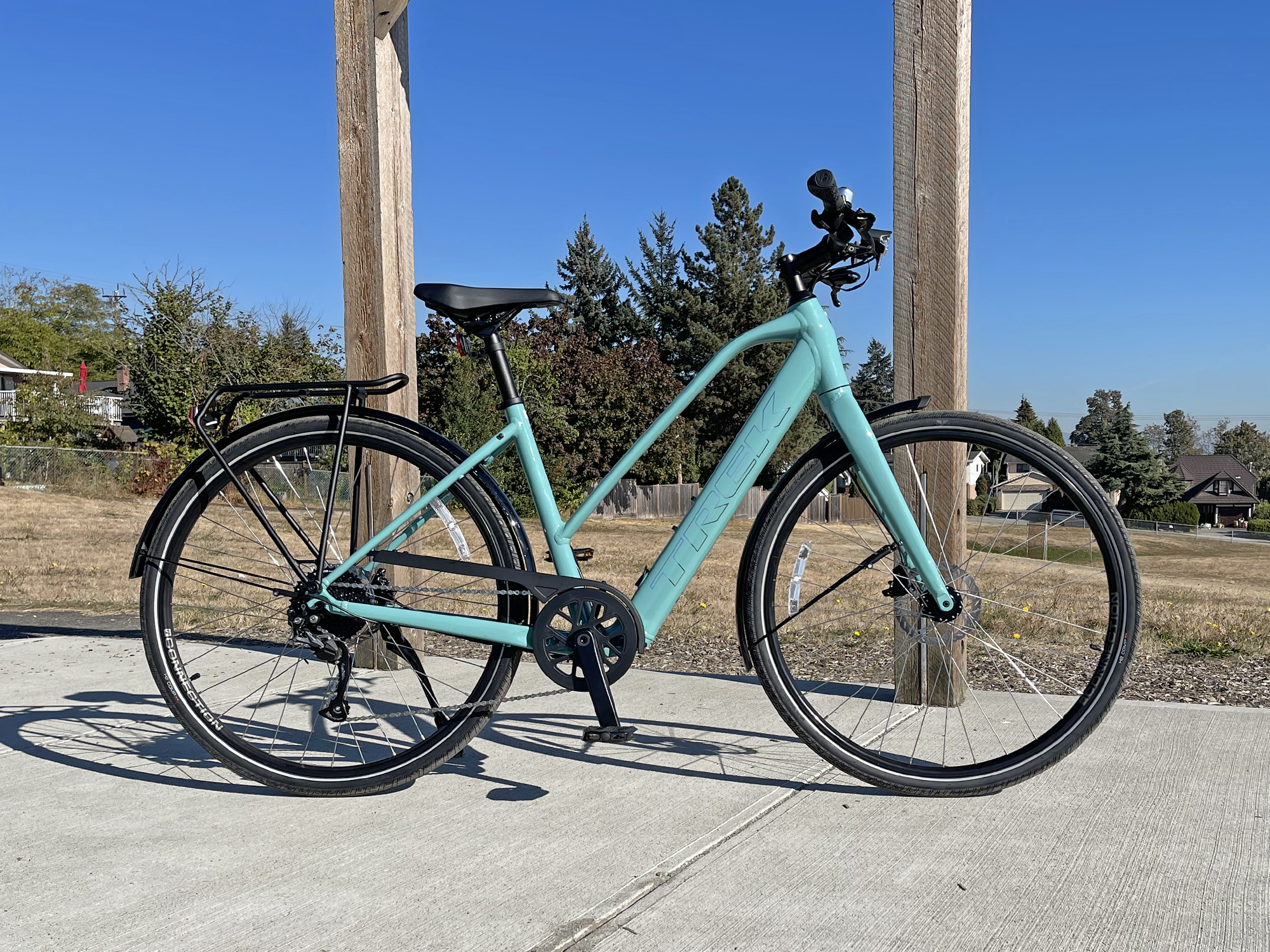

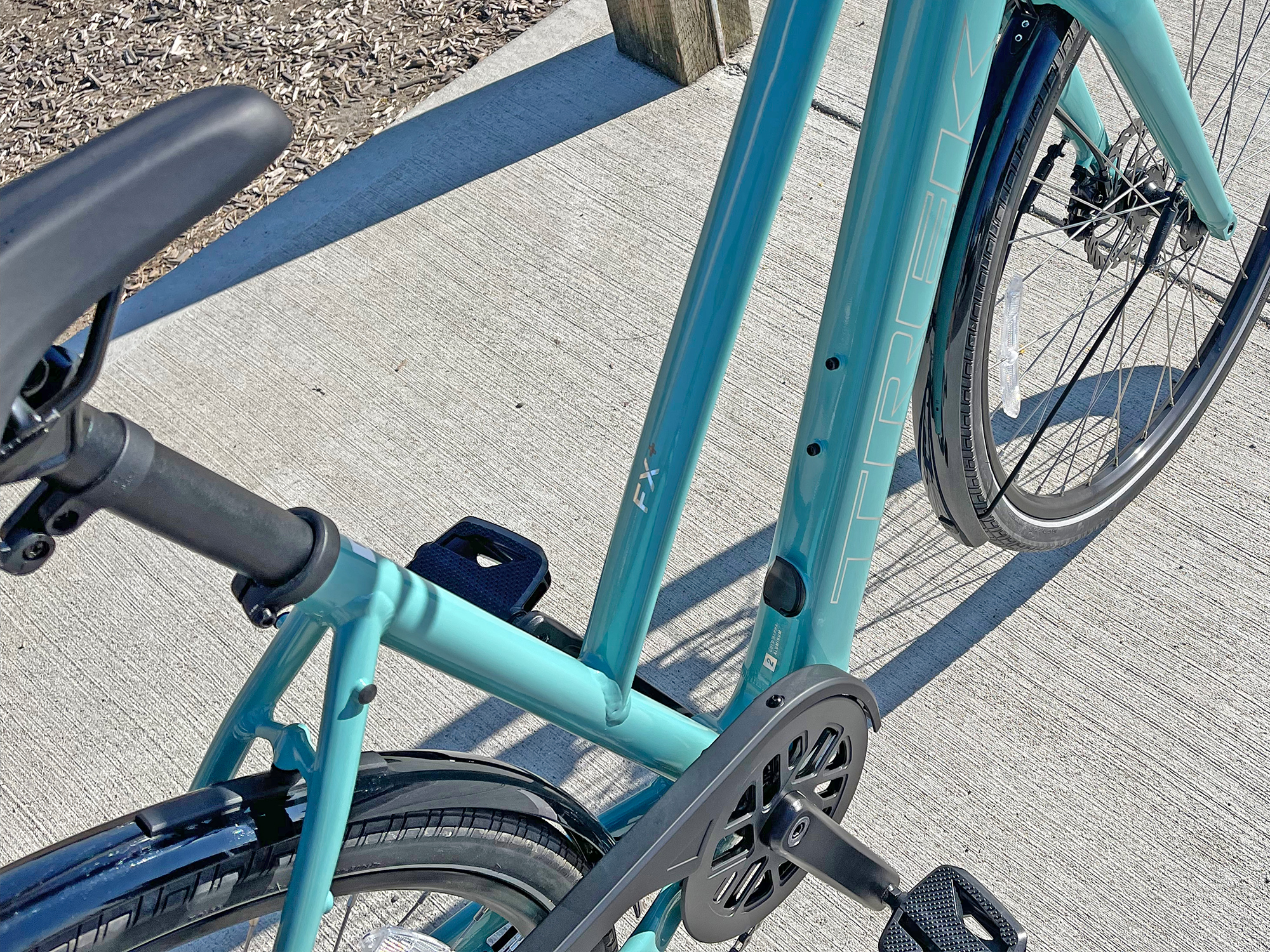
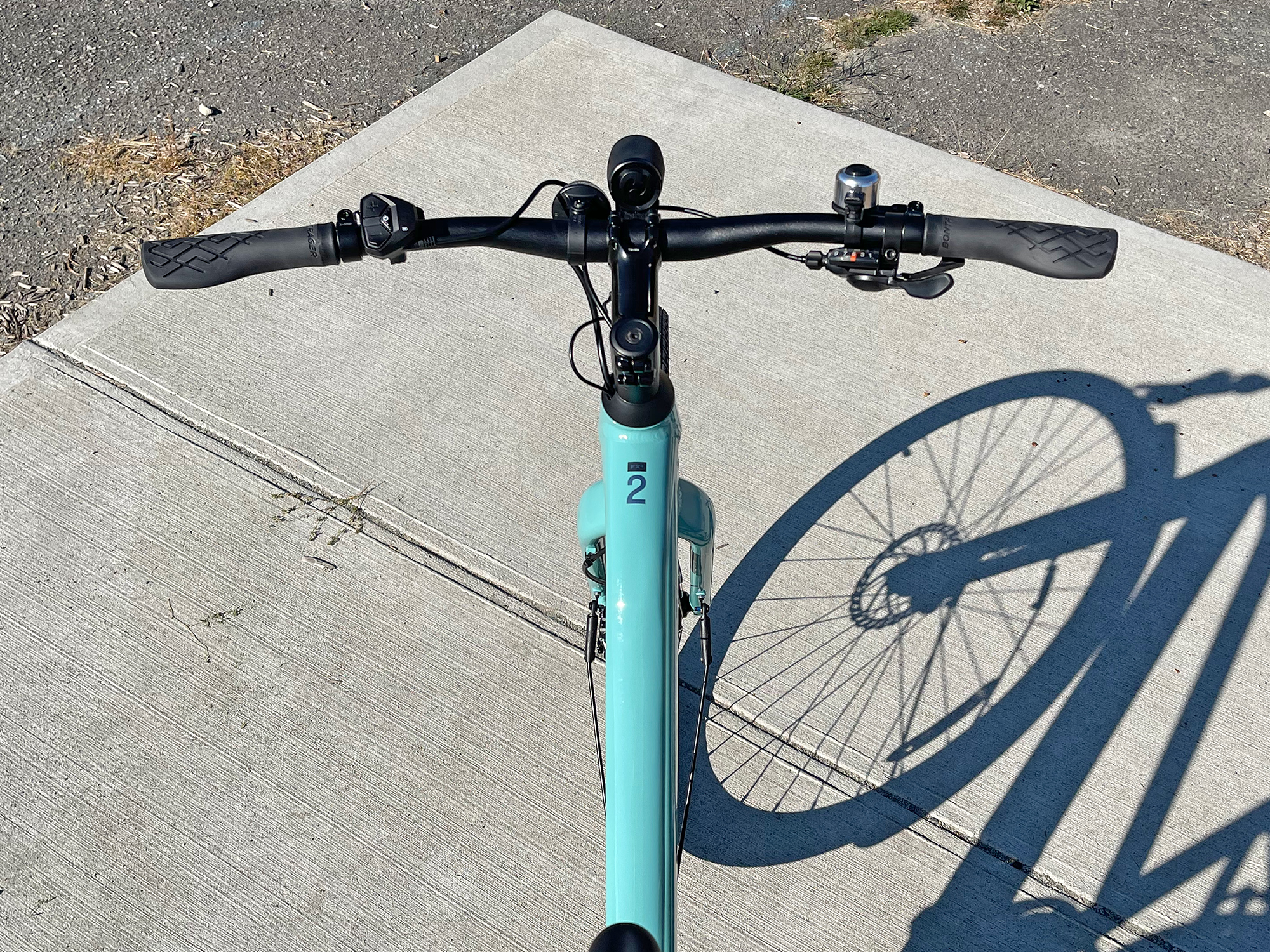
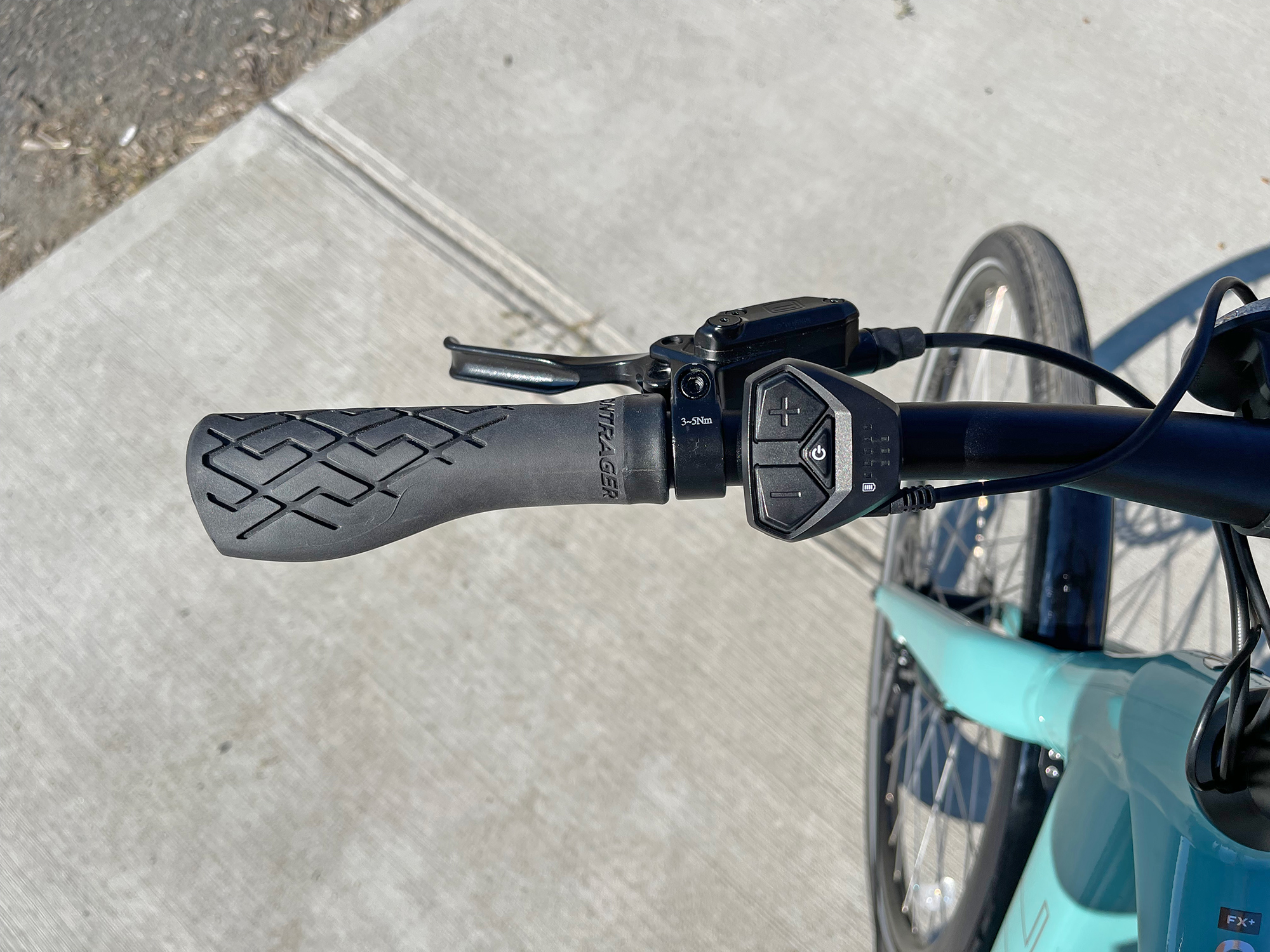

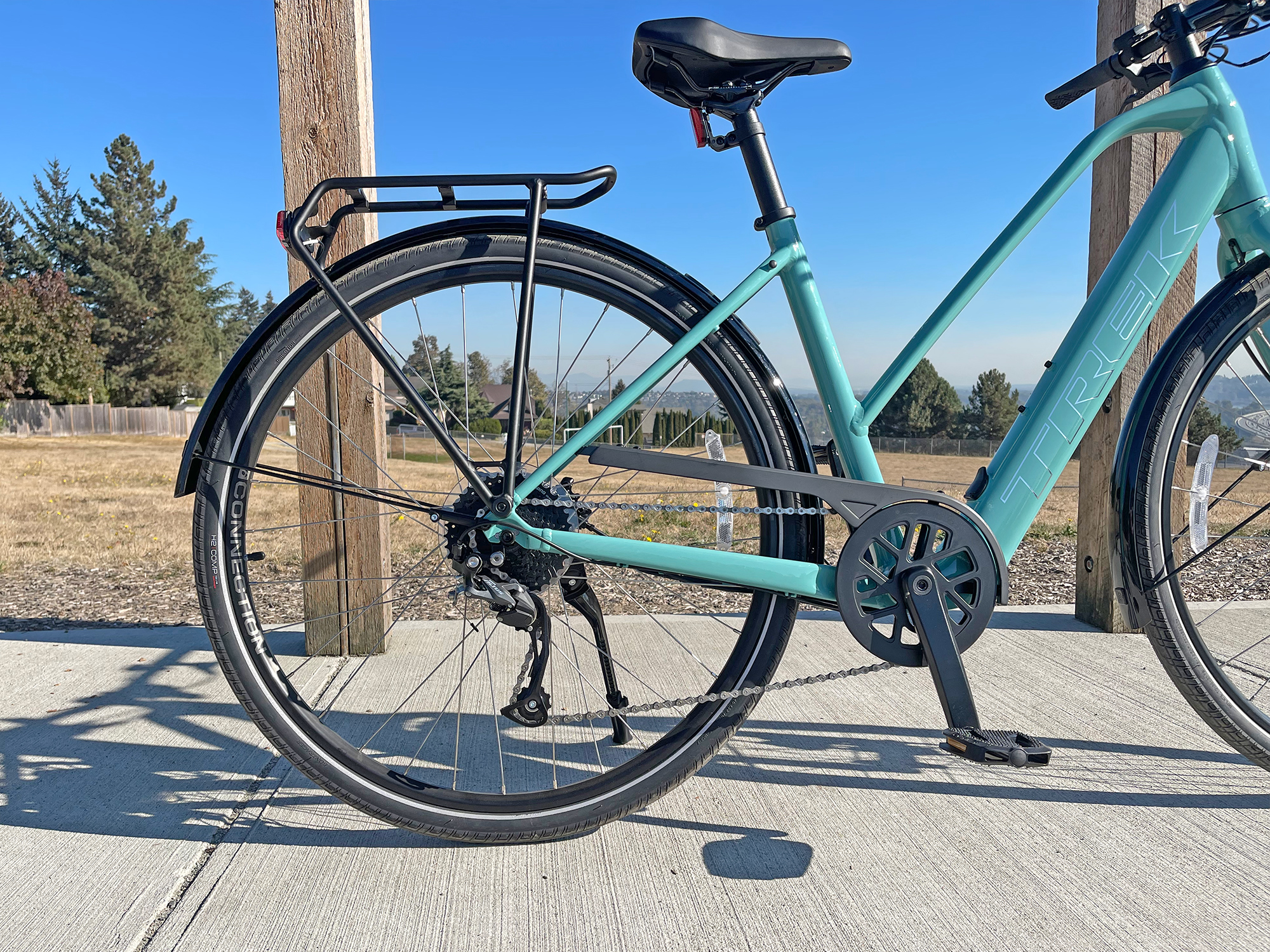
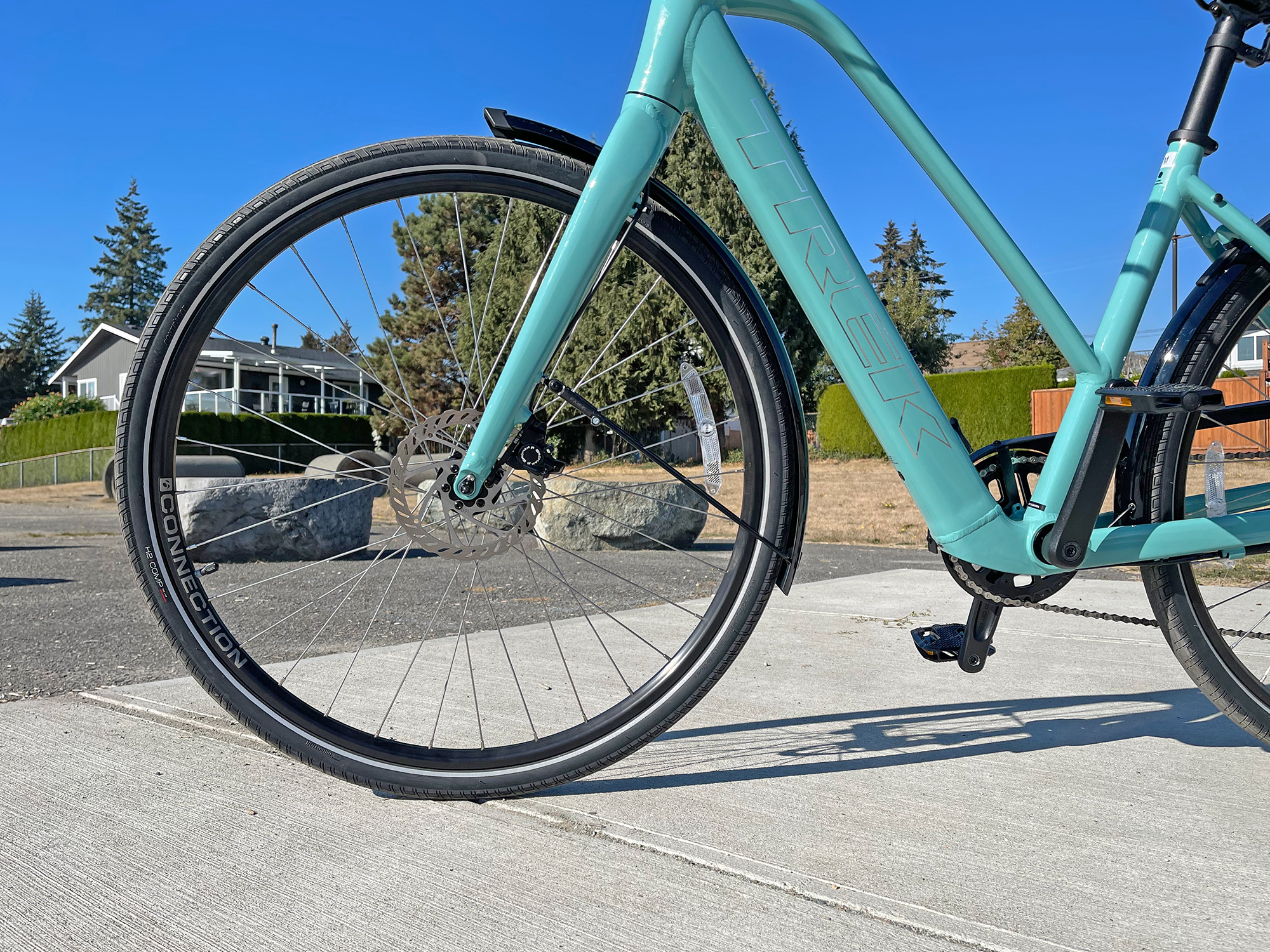
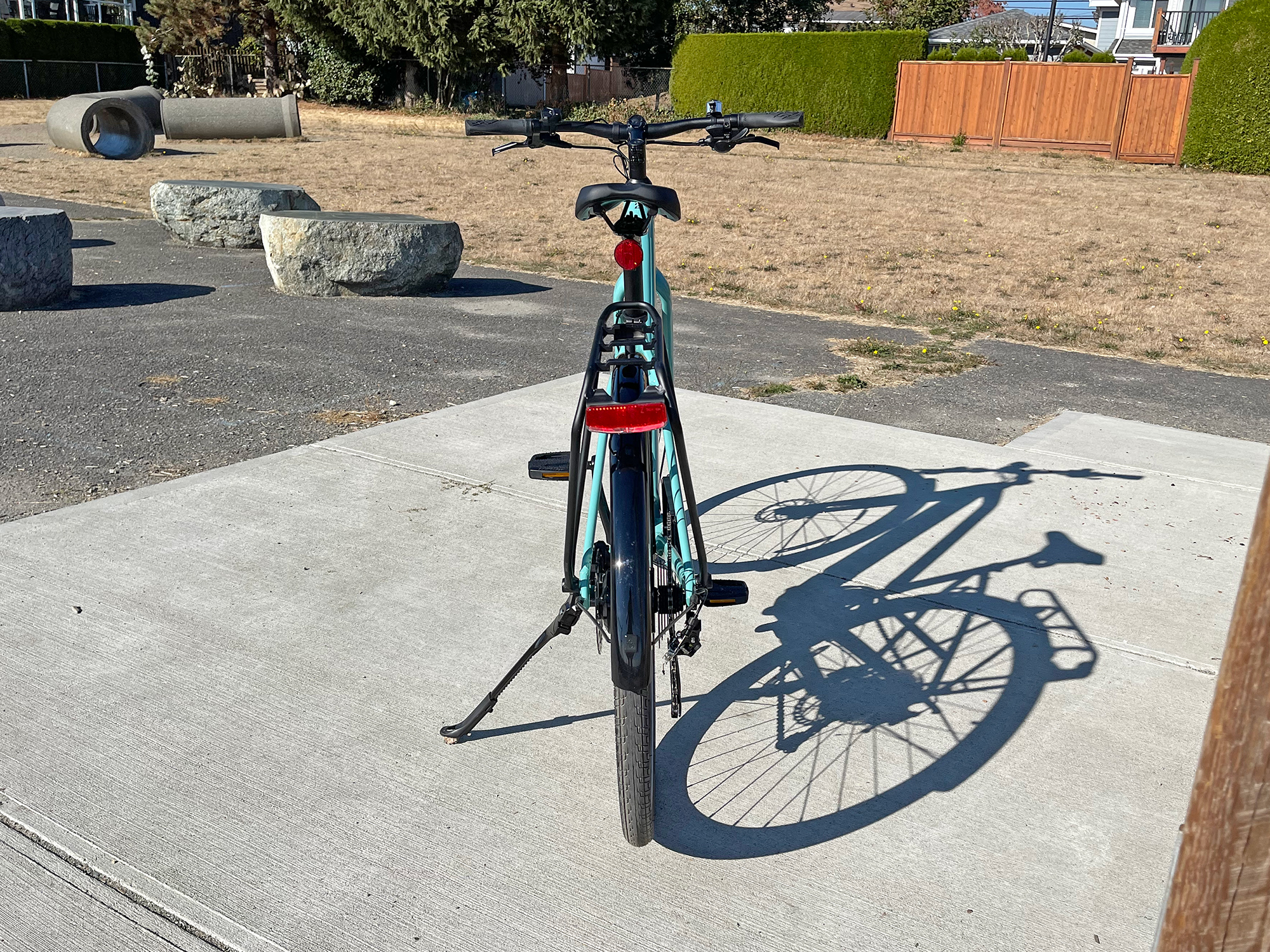
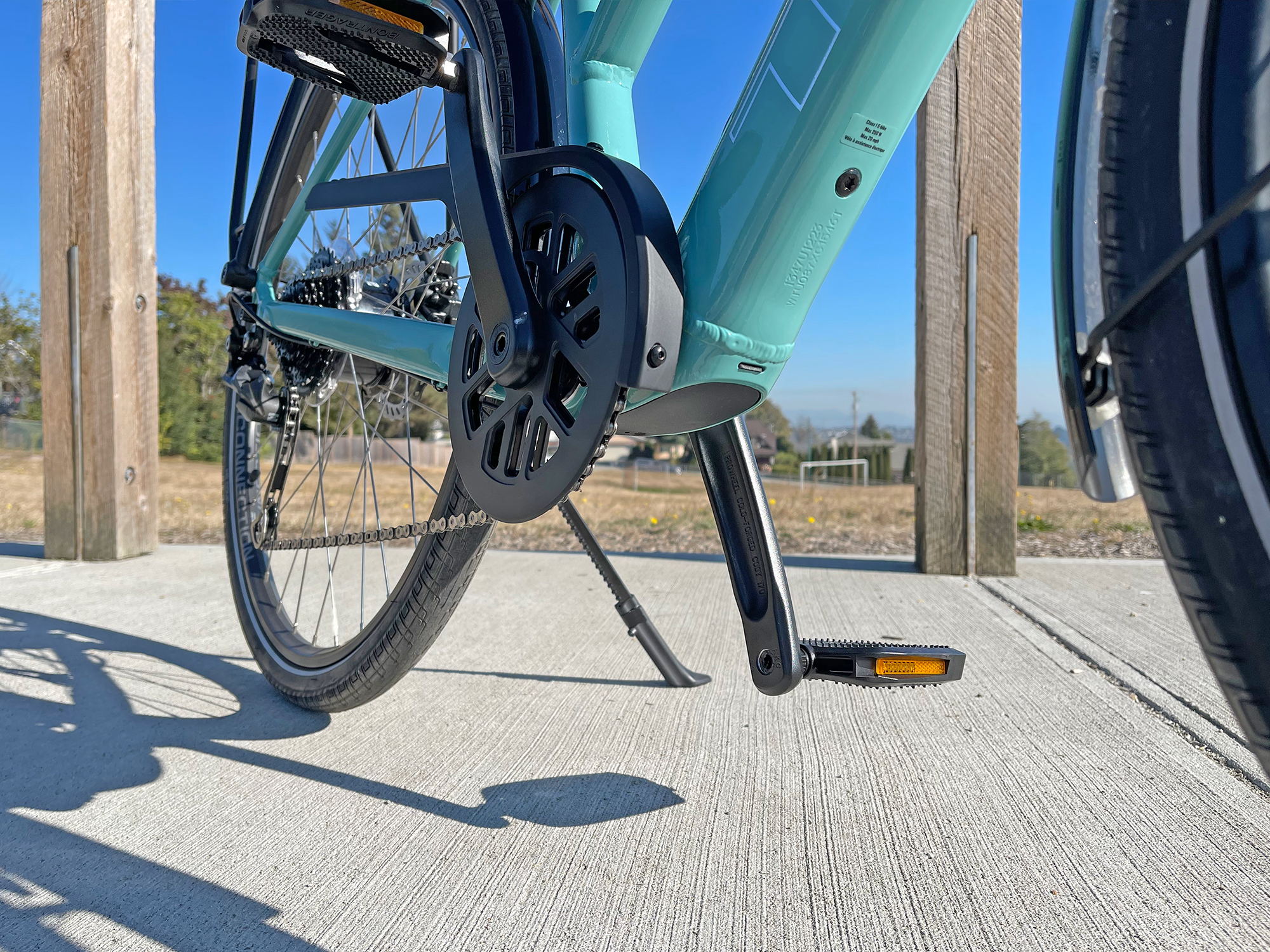


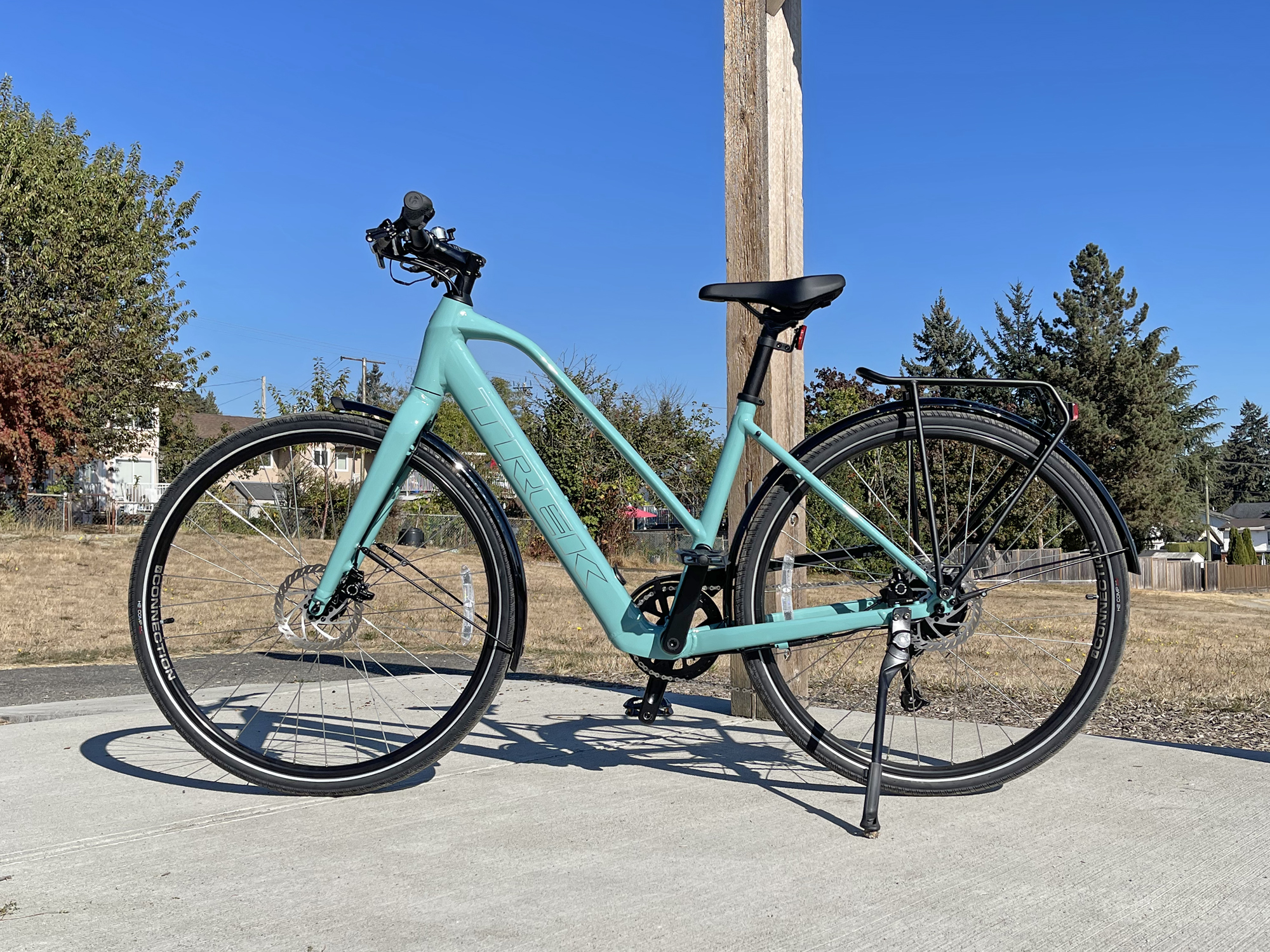
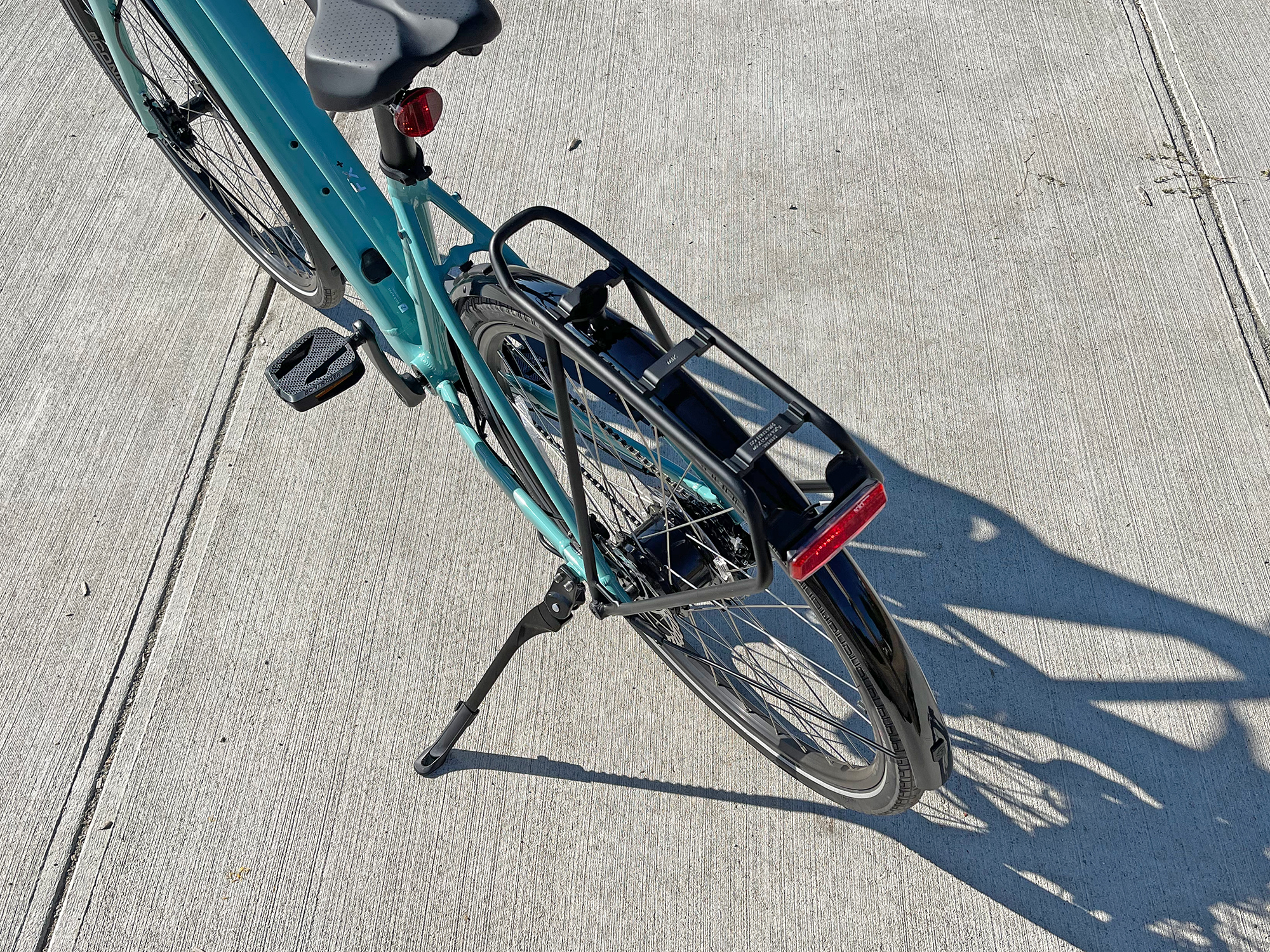
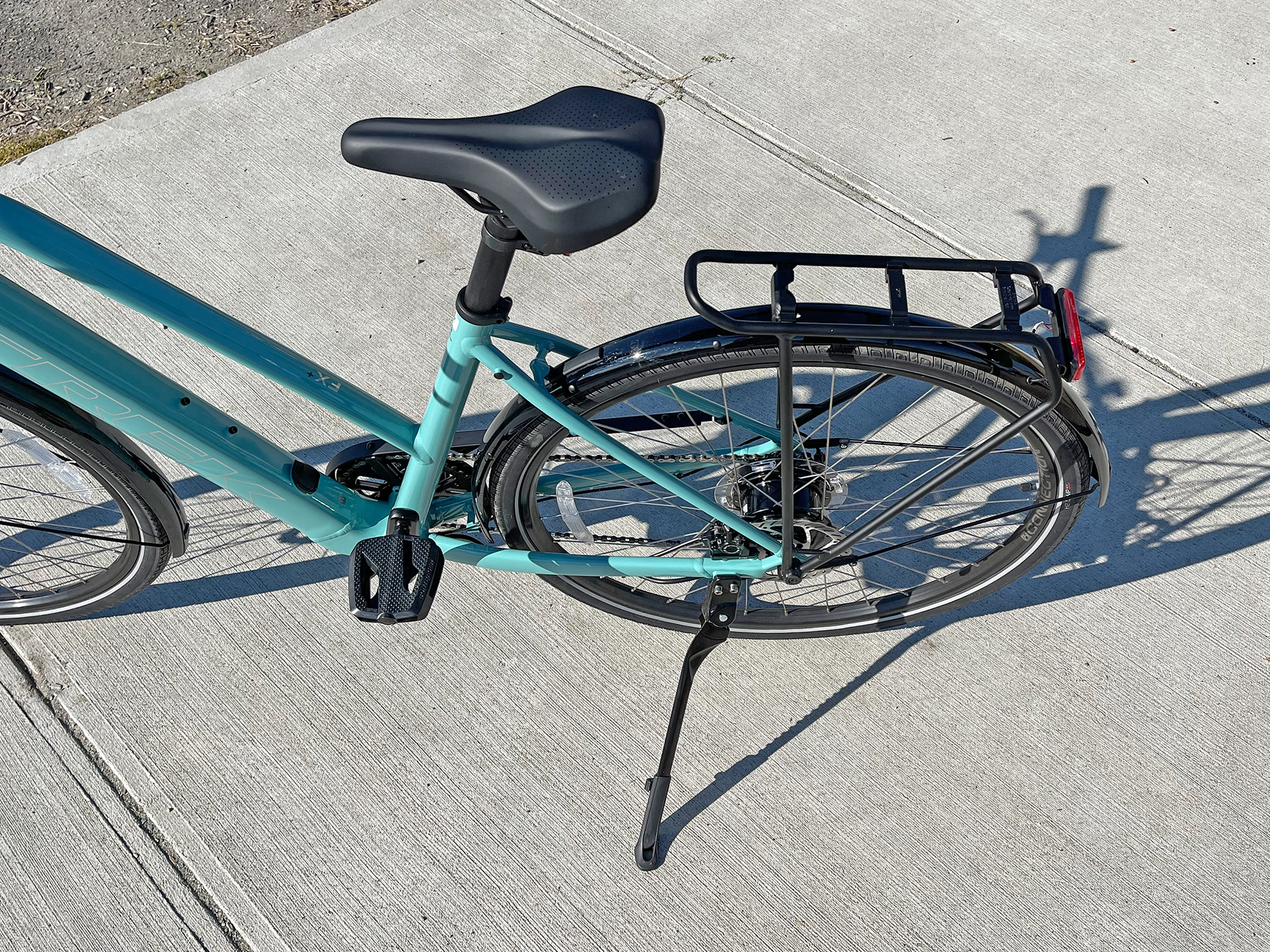


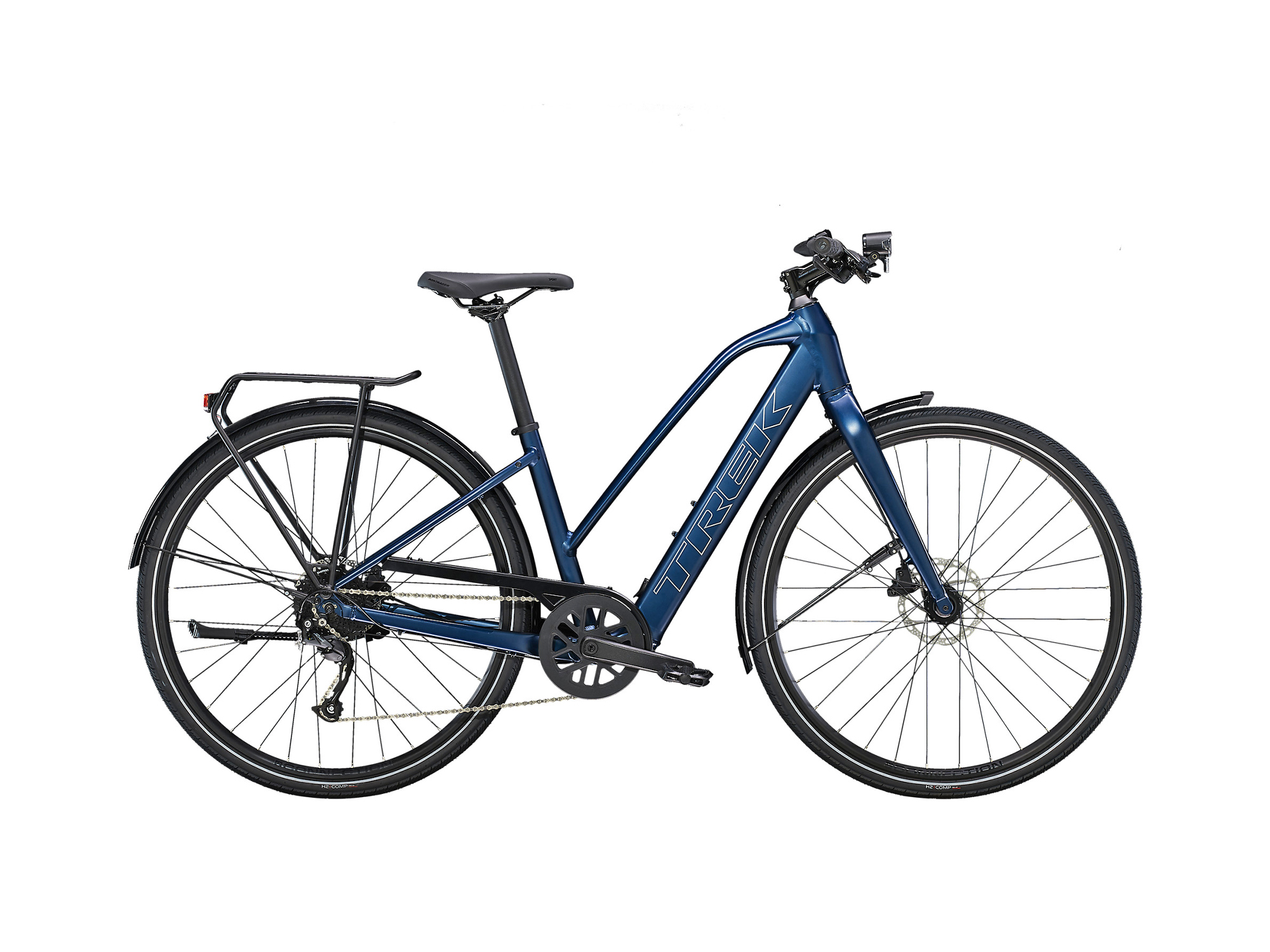
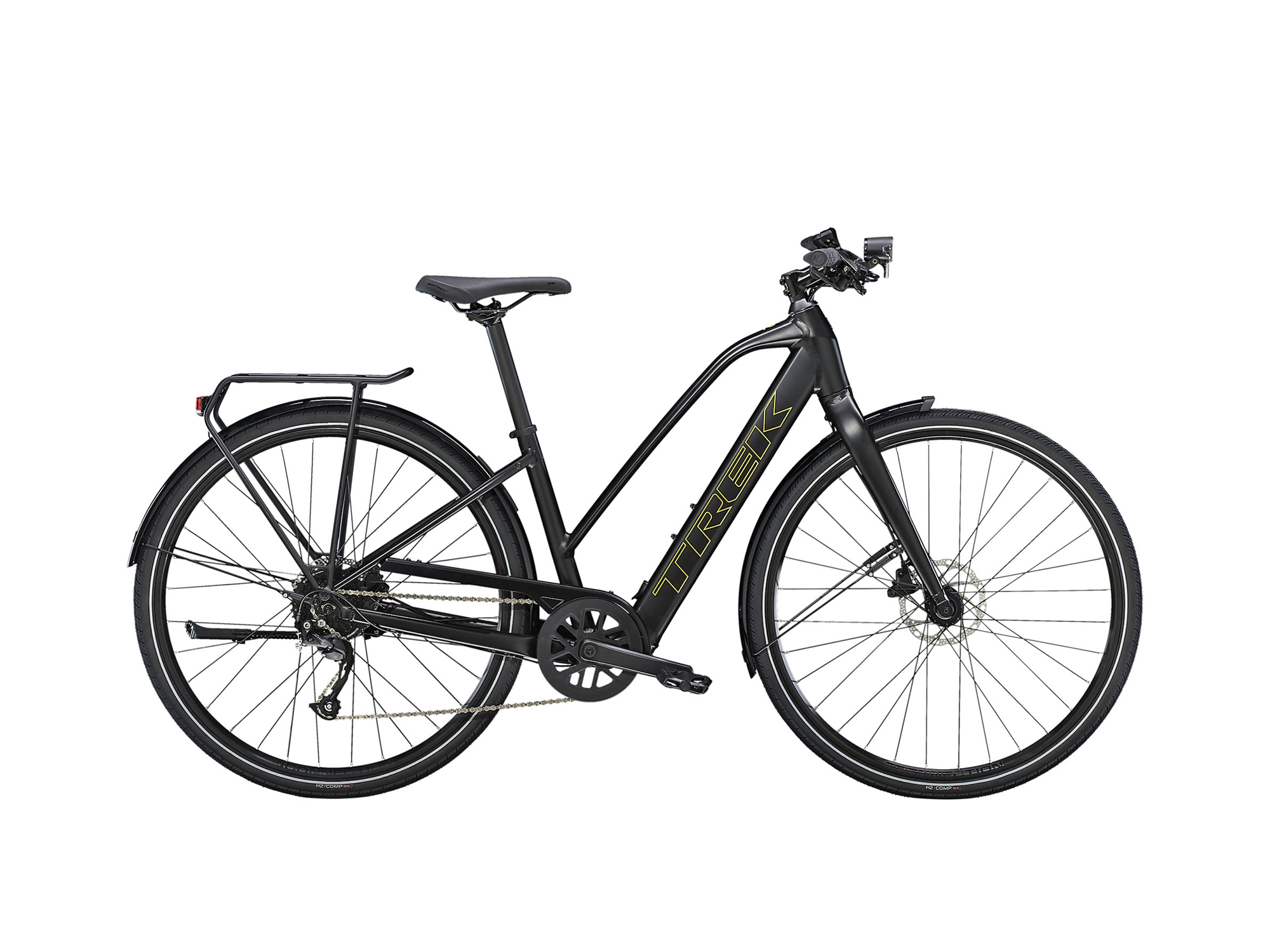

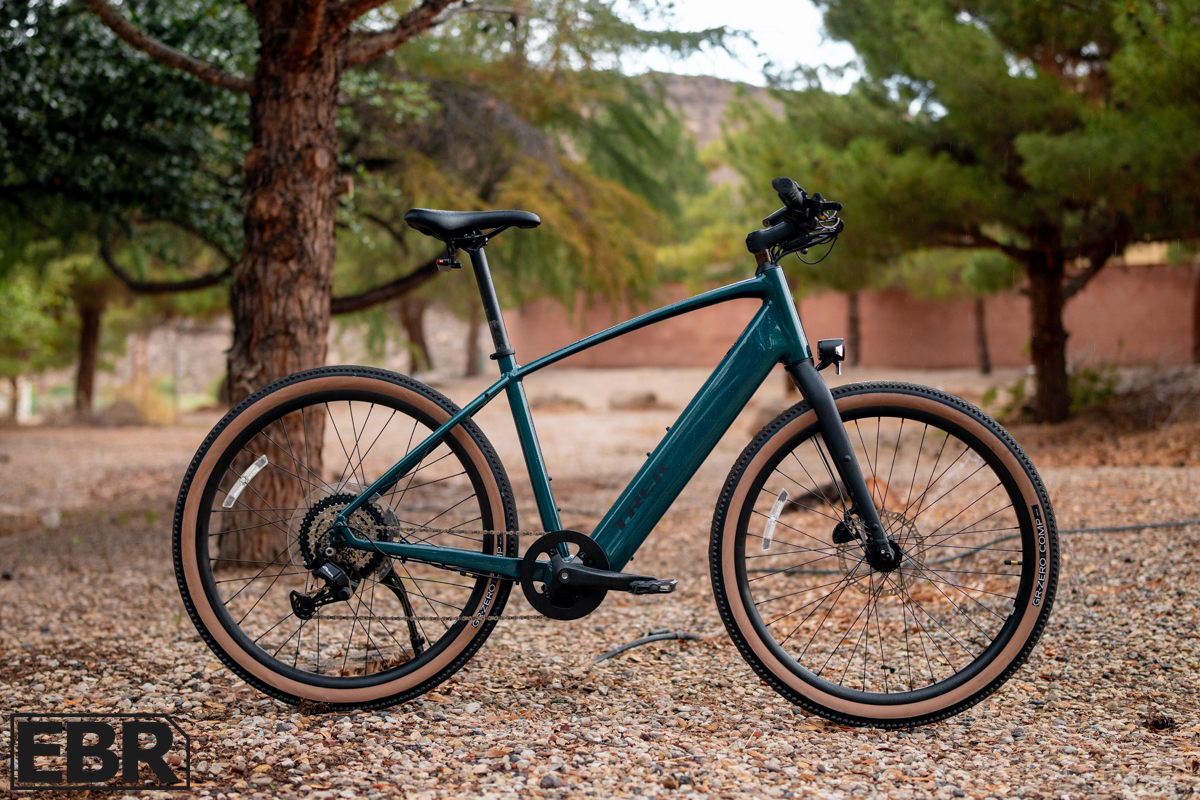
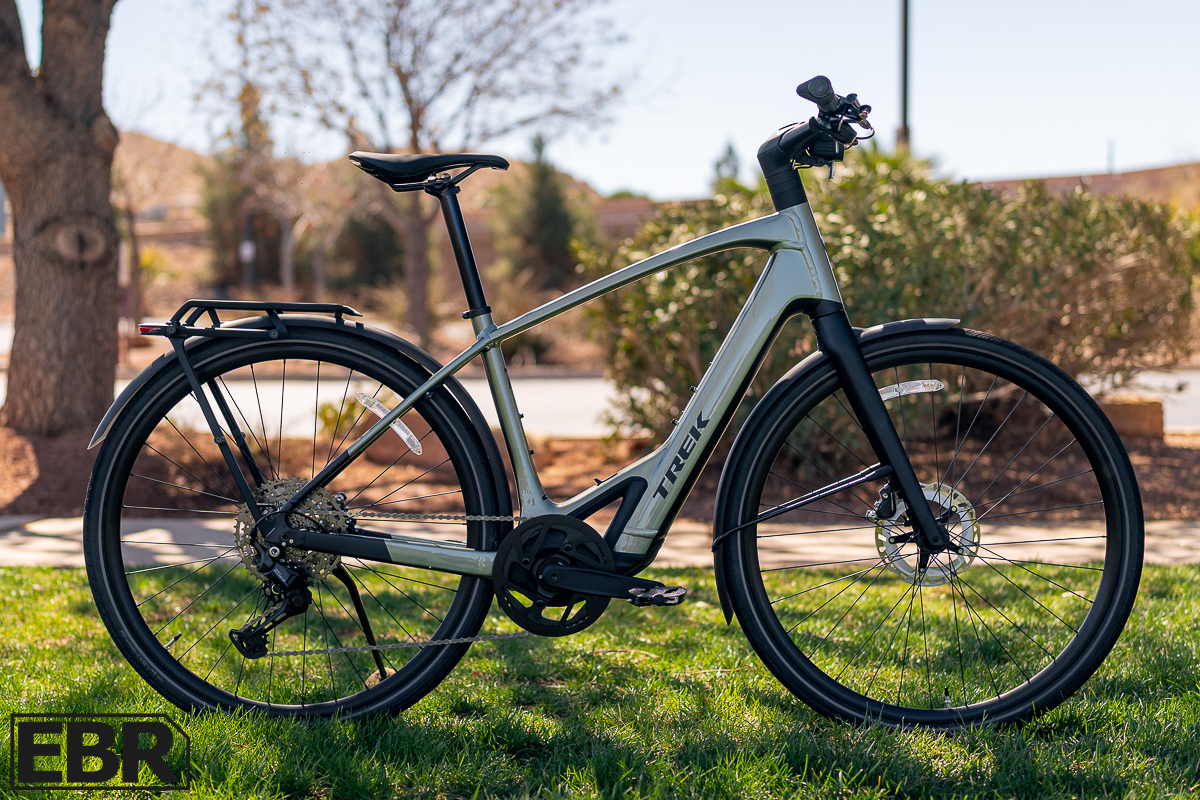
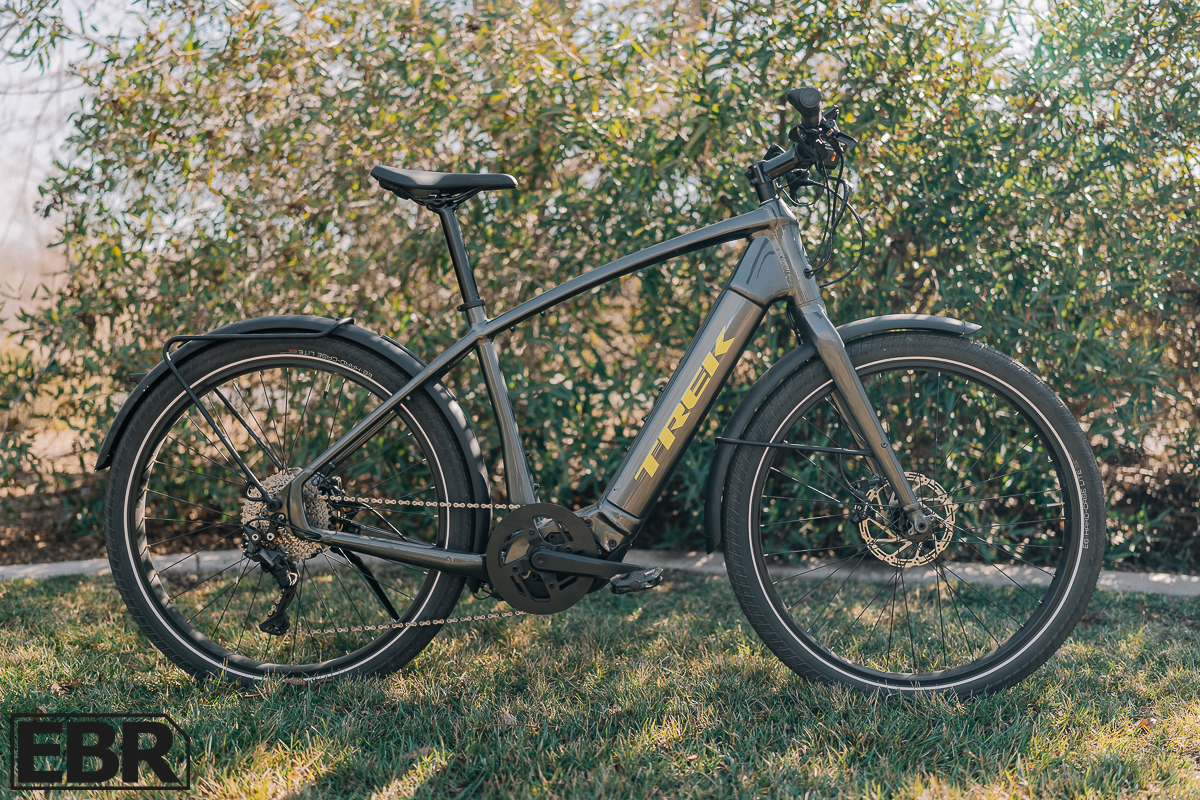
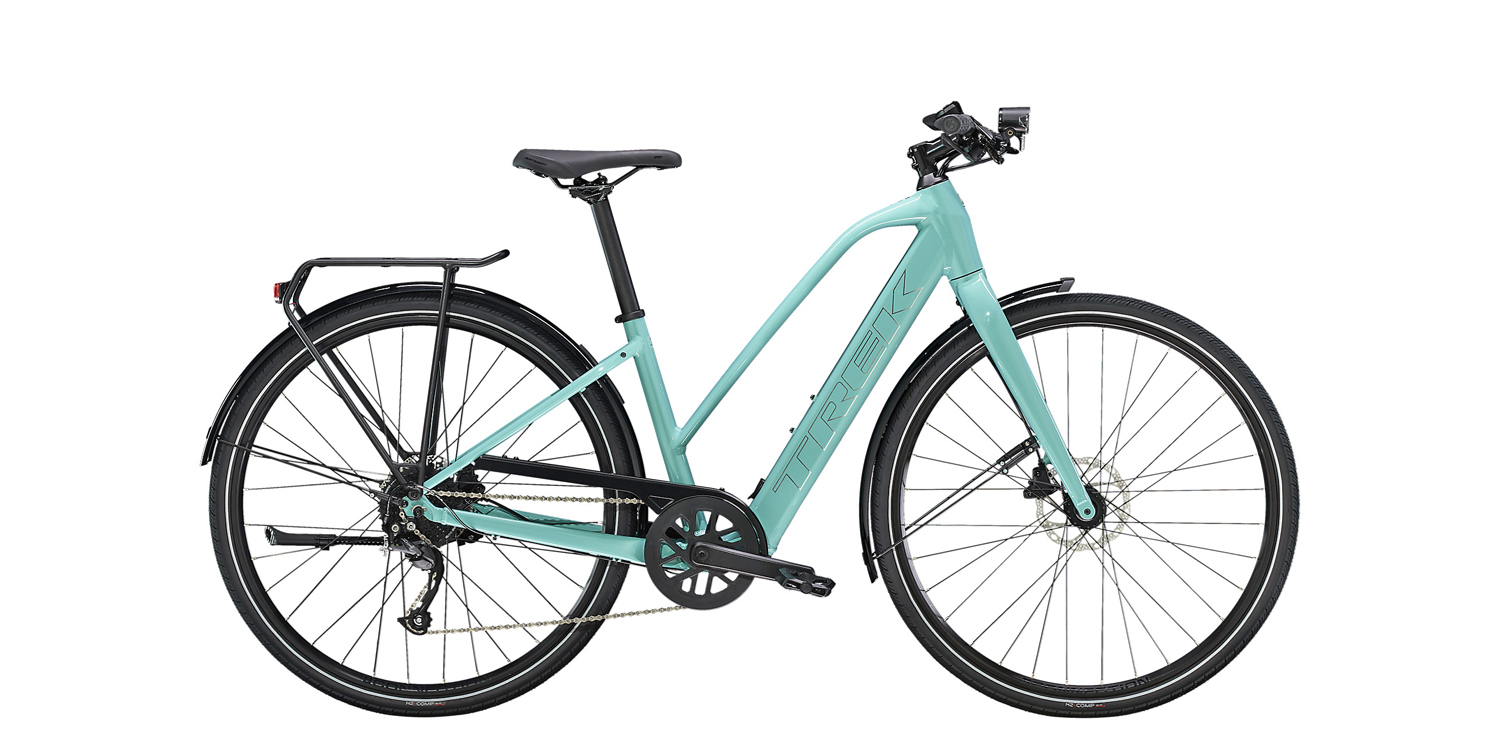
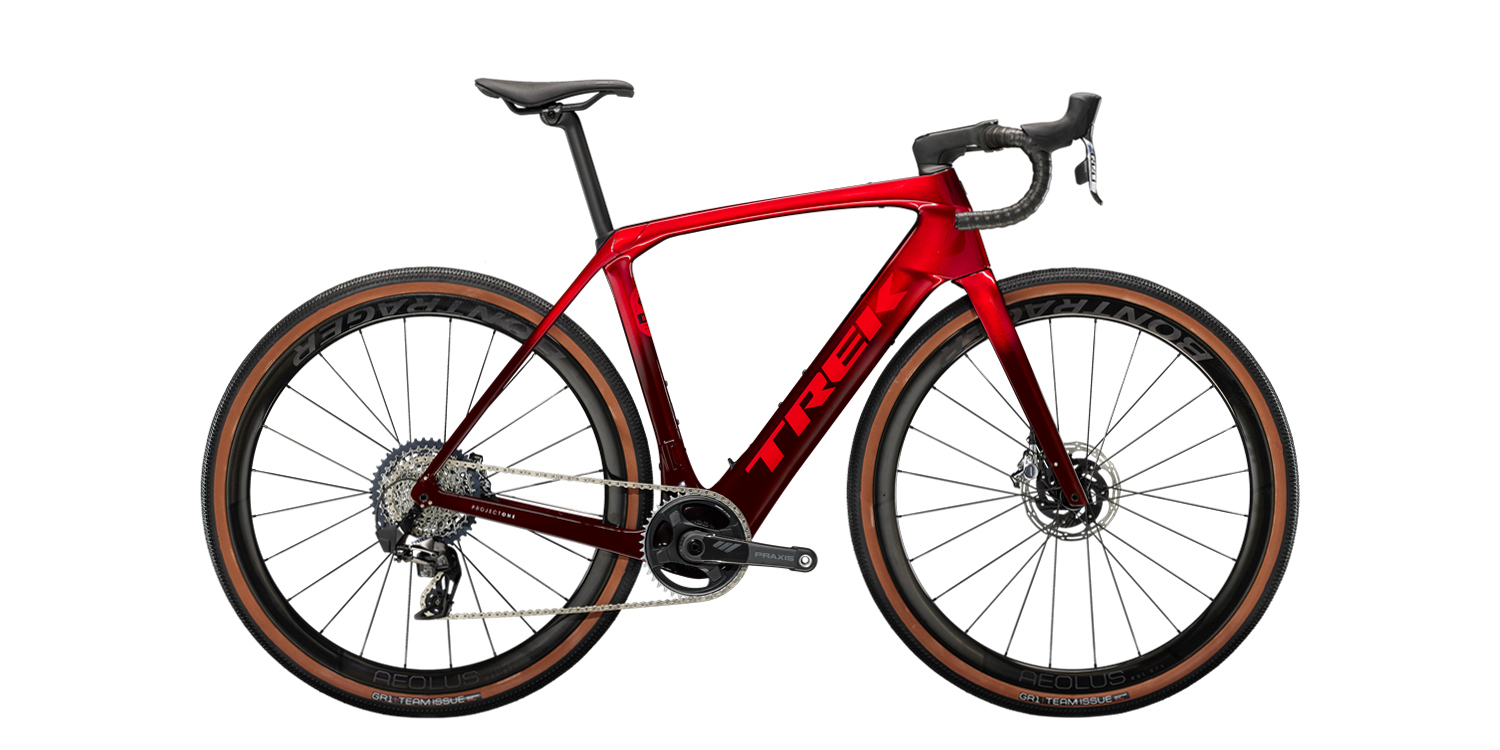
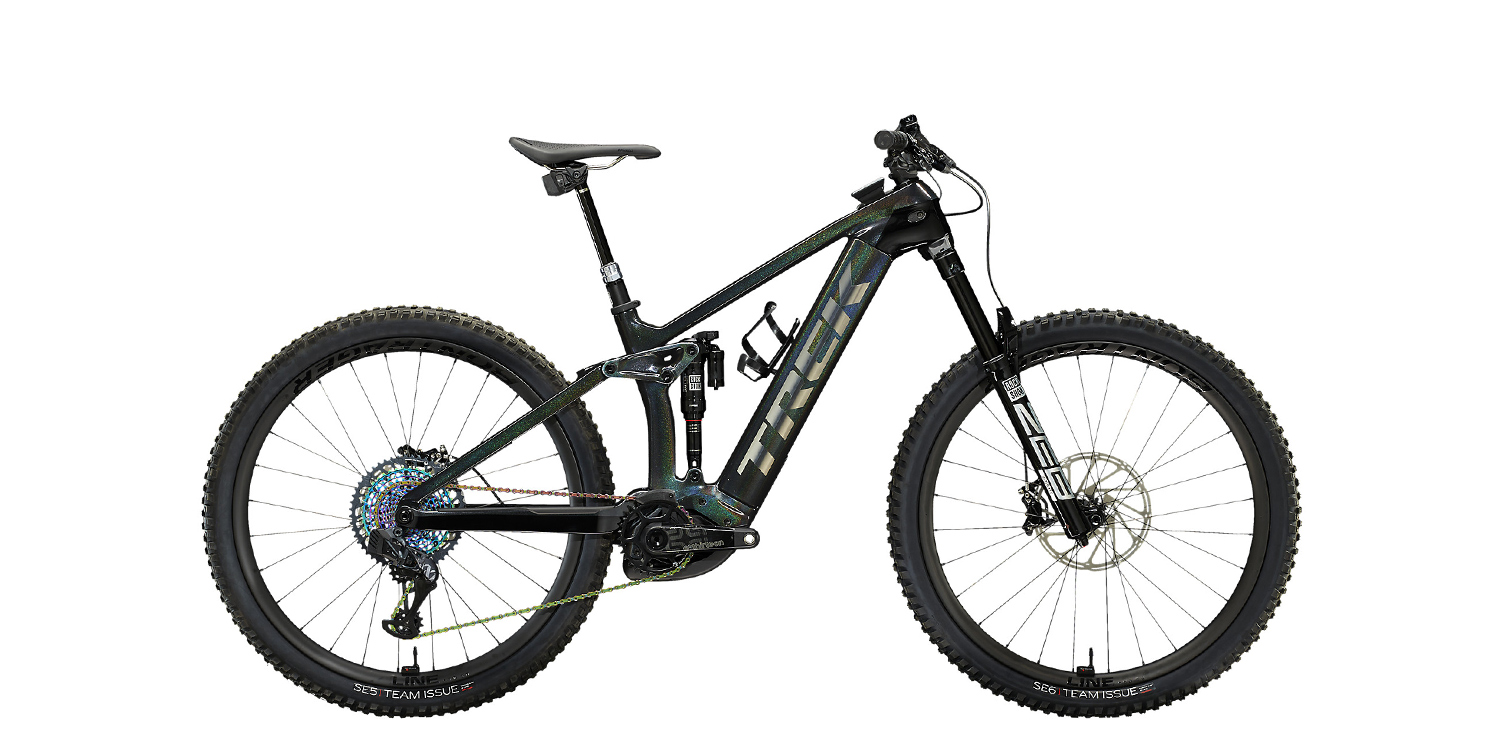
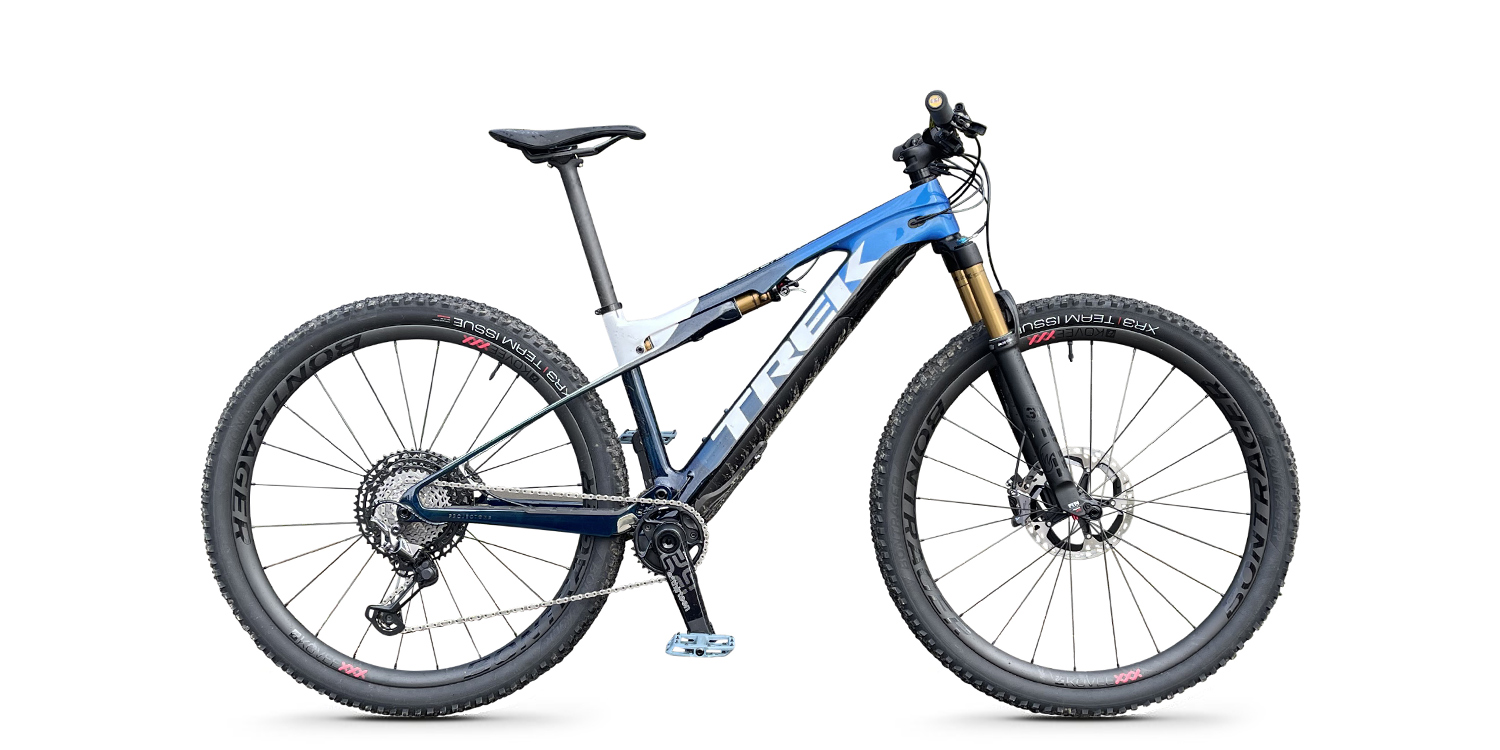
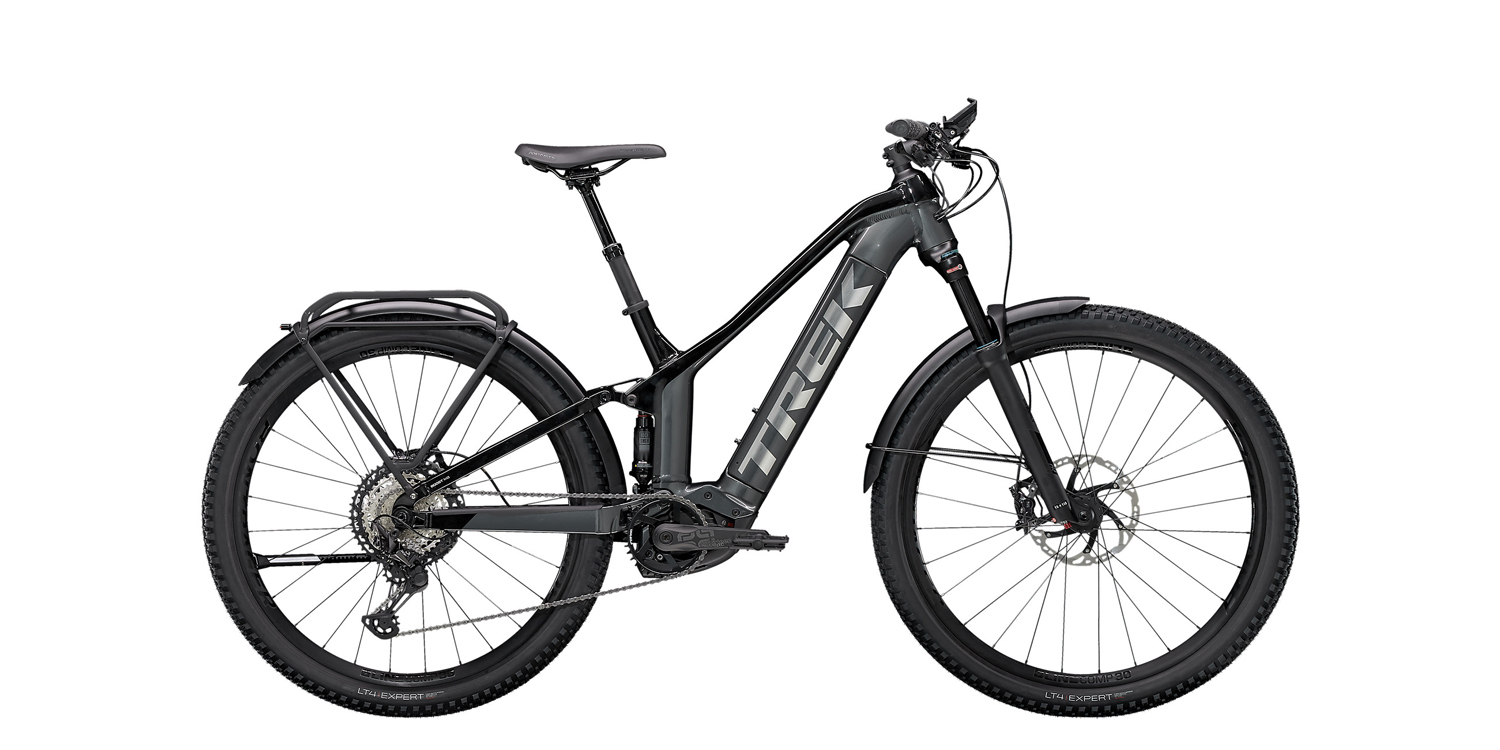
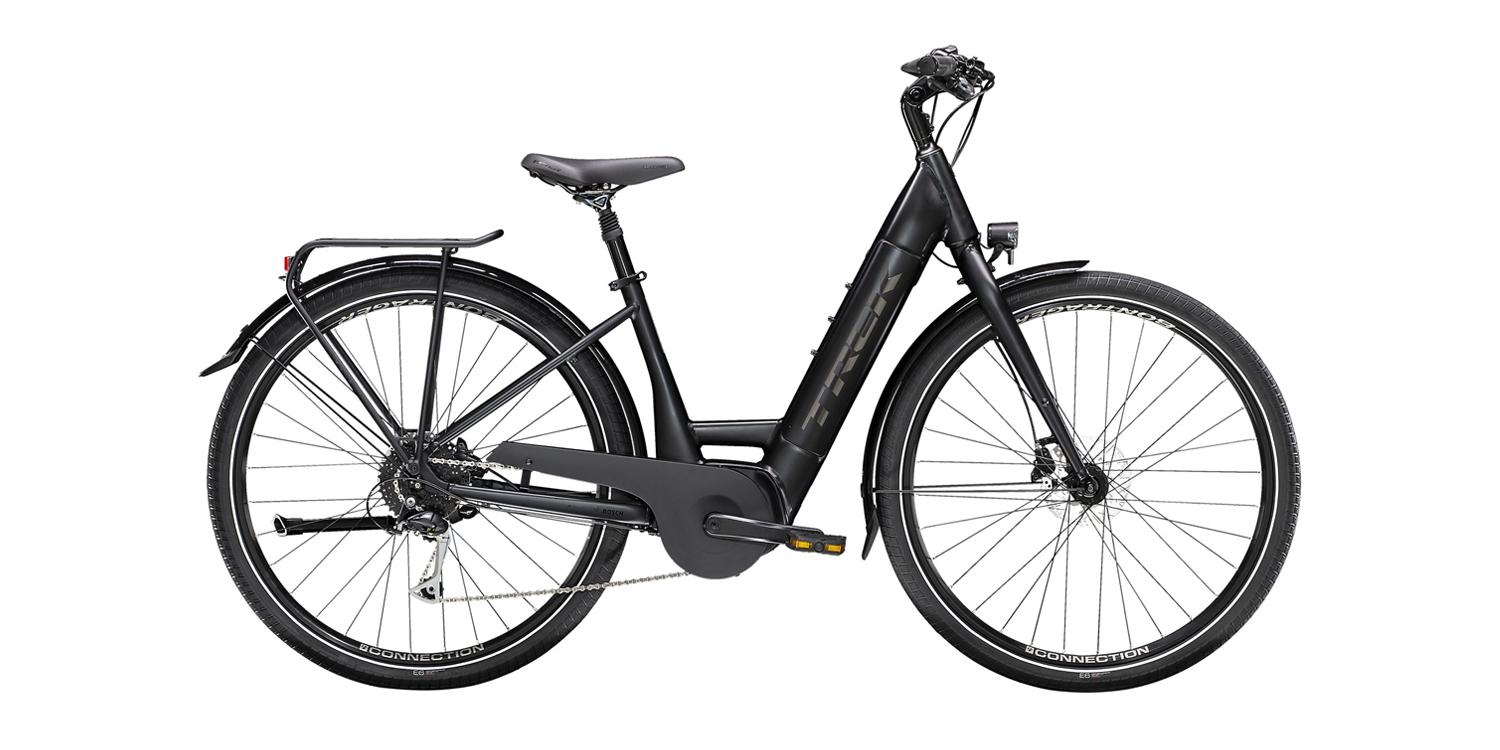
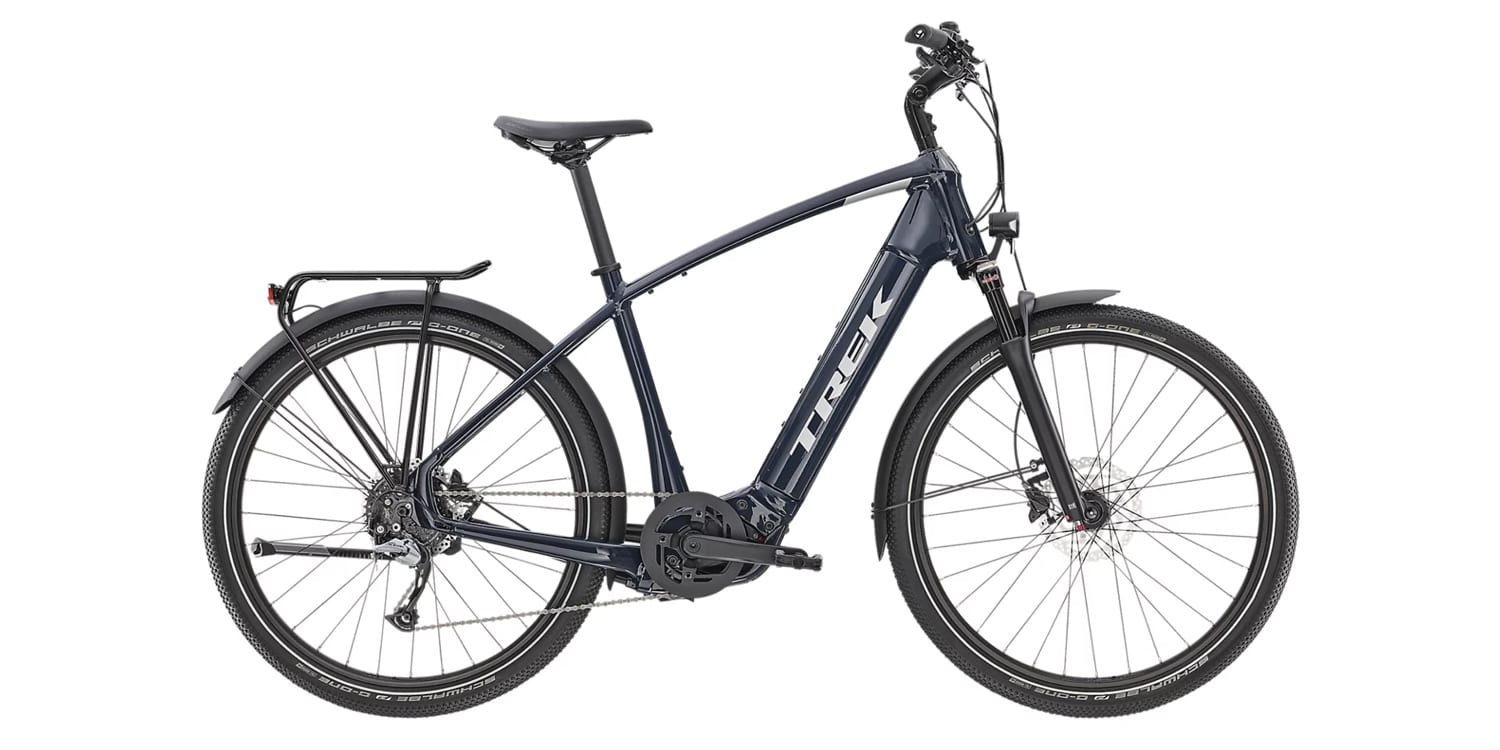
Richard Stallard says
Any comments on the smoothness of the motor assist? My wife has a Fx+ 2 high step model and finds the boost is too strong at low speed such as when maneuvering through an intersection over curbs, ramps, etc. After closer observations, we concluded the boost seemed to switch on/off in response to rider torque rather than the boost being proportional to rider effort, for example with the Trek Verve+ 2 bike with Bosch drive. Overall, we were disappointed that the Fx+ didn’t appear to be fully utilizing the capabilities of the torque sensor. We asked our Trek dealer to dial down the lowest boost level, which was easy for them to do. However, my wife still prefers to switch the boost off for low speed maneuvering situations.
Court says
Hi Richard! It’s interesting to read your comment about assist, and how the torque sensor might be less dynamic than Bosch and others. This was my experience as well, the torque sensor didn’t activate motor power as instantly as I had hoped, and I didn’t notice a variation of assist as much as low, medium, and high for each of the assist levels. It seemed much more like a traditional cadence sensor, and most of my rides were conducted using the highest level of assist. Thanks again for sharing your perspectives. My video review is now embedded on the page and live on YouTube so you can hear and see more thoughts realtime as I rode!
Richard Stallard says
Like you, I was a bit anti hub motors because I thought they missed out on the gearing of the chain drive to increase torque, but then it dawned on me that even the lowest gear on most e-bikes with 1x gearing is more than 1:1 (e.g. 42:36 or 44:42) so the torque of a mid-drive motor is actually reduced by the time it gets to the back wheel, whereas the hub motor always has 1:1 torque factor.
Court says
Hi Richard, that’s a good point. I wouldn’t say I’m anti-hub motor, just recognizing the trade offs between different setups! I appreciate that hub motors can work even if the chain breaks or there is some other drivetrain issue with the cassette, derailleur, or chainring. I like how well they pair with throttle systems, and I definitely appreciate how inexpensive they can be. That said, it makes wheel maintenance more difficult because of the power cable, and adds unsprung weight if it’s a suspended wheel. It can also increase wear and tear on the drivetrain (chain etc.) unless there’s shift detection in place.
Martel Ame says
I bought mine like almost 2 months ago. My FX+2 sometimes doesn’t assist even I turned on my electric assist. I need to turn off and turn on like once or twice before it assists. Sometimes when it assists when I turn it on first try. Sadly, I find it hassle when I need to off and on multiple times before electric assist can read my pedaling. Did you experienced it as well?
Court says
Interesting, I did not experience this during my test ride Martel. However, I got a brand new model and only spent a day riding it. Perhaps there’s a loose connection from the battery to the motor controller? One of the big benefits of buying any Trek or Electra model is that they have a lot of dealers around the US and Canada. If you happen to be near one, I’d definitely take the bike in for a tuneup, maybe there’s even a new firmware they could load that would help! Sorry to hear about the issues, but I hope you can get them resolved and enjoy the bike as it was intended without issue.
Gerard says
Hi, I wondered if you got this resolved? My wife has the same issue on and of on her Fx+.
Regards, Gerard